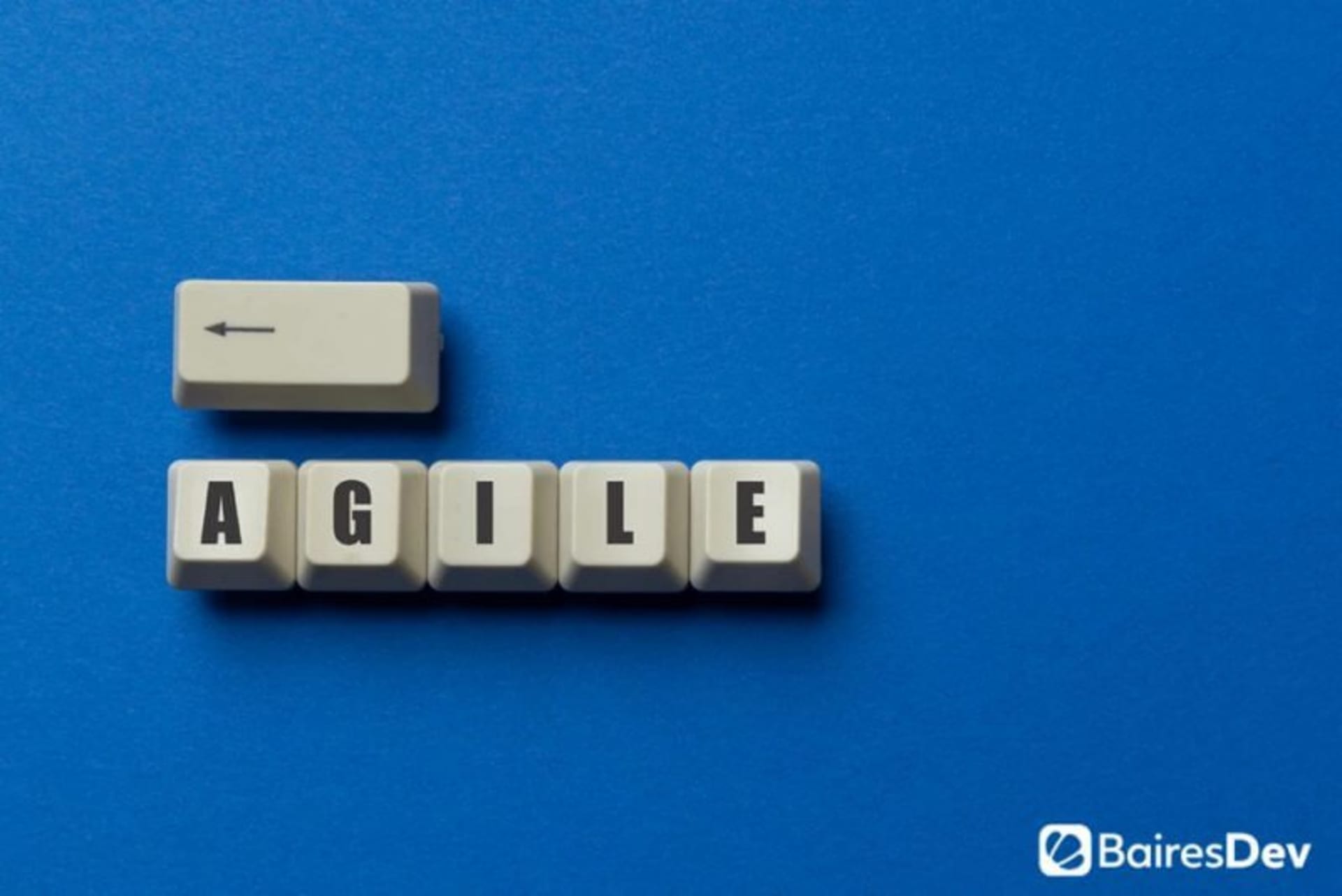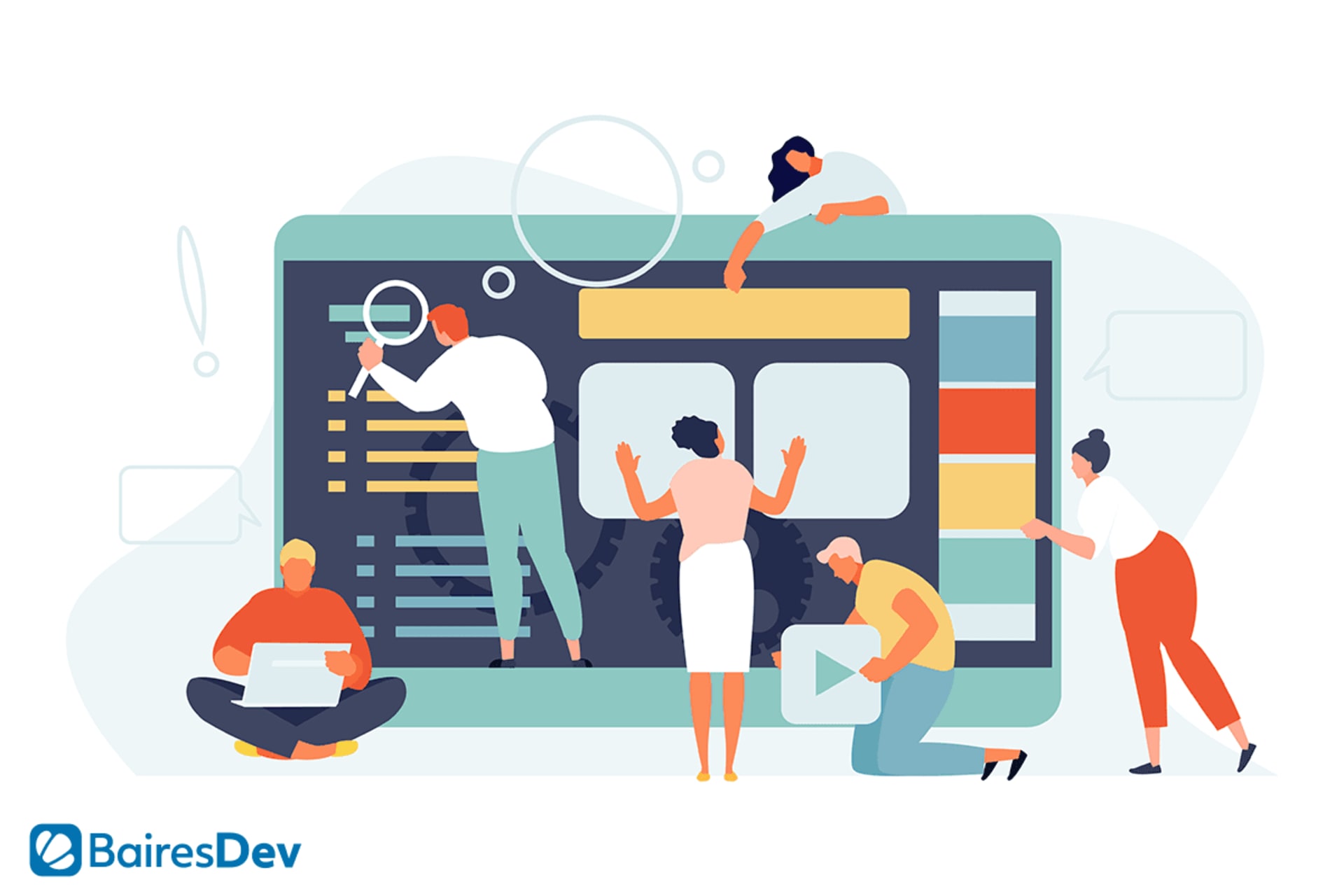If I said that Artificial Intelligence (AI) is the most wanted technology in the business world, you’d definitely have it hard to argue it. As a quick Google search can show you, AI is reshaping entire industries by automating processes, augmenting the capabilities of staff, and turning massive amounts of data into detailed insights.
So, you can’t blame companies for wanting to revamp their businesses with AI-powered solutions – especially with the new normal pushing everyone towards reinvention. The pandemic brought new challenges and created disruptions that will live with us for a while. It’s not surprising, then, to learn that companies are turning to AI to regain their competitive edge.
Yet, integrating AI within a business isn’t a plug-and-play type of thing. The process requires specific technical knowledge, a strategic approach to its implementation, all kinds of resources, and the collaboration of the company’s entire workforce. All of those are massive challenges you’ll have to undertake if you want to leverage AI but today I’m going to focus on the last one. Why? Because you need to have your staff by your side if you want your AI integration to be successful – something that’s easier said than done.
Employees tend to see AI as a menace. Many of them have bought into the idea that AI is coming to replace us all, so they naturally feel threatened by its inclusion in the workplace. Other people feel perplexed by AI’s complexity, while another group seems to think that using AI as it is today is pointless. Those sentiments form a sturdy resistance you’ll need to overcome to successfully integrate AI into your business.
Don’t know how to do so? Here are some suggestions to get you started.
Take the Time to Explain AI to Your Employees
With so much information about AI floating around, it’s easy to be overwhelmed and to feel confused. Many articles present AI as it was ready to take over the world and relieve us from our jobs, our chores, our activities, and everything you can imagine. Yet, AI’s potential today is far from all that, because AI-powered solutions aren’t sophisticated enough to do most of our human activities.
Unfortunately, that abundance of information can have a negative impact on your employees, making them believe that implementing AI in the workplace means they’ll be soon replaced by a machine. Your first task before investing in artificial intelligence, then, is to convince your staff that such a thing won’t happen anytime soon. In other words, you need to explain AI to your employees.
When you do so, you’ll have to try to cover as many AI facets as possible. For instance, you can begin by demonstrating the capabilities of a modern AI solution (such as a chatbot or an automated marketing platform) and then discuss AI’s potential and its limitations. Finally, you should always address why you want to implement AI in your business. Chances are that this talk will have you discussing how AI will help each specific department in becoming more efficient and productive.
Ally with AI Enthusiasts In Your Company
Having a couple of meetings to discuss AI’s benefits for your company won’t be enough to curve down your employees’ resistance. You’ll need an ongoing effort to teach your staff everything they need to know about AI and its advantages. Naturally, you can’t devote yourself to do so day in and day out, which is why you’ll need to build a small team of AI enthusiasts to help you.
Gathering that team can seem tricky at first – but it doesn’t have to be. When you first discuss AI’s implementation in your business, try to identify the employees that are most engaged. Those that ask the most questions, that express wonder, that give their opinion, and that feel excited about AI are natural candidates to become your AI allies. They can be anyone within your company, from an HR manager to a C-suite exec.
The importance of building such a team is that it’ll help you push AI into your workplace. They’ll bring it up any time they can, discuss new AI advancements, highlight growth opportunities that could benefit from AI during daily tasks, and even lead discussion groups and training programs. Basically, your AI allies will naturalize AI within your company, thus helping other employees to start seeing it differently.
Build Trust Through Transparency
The resistance in the face of AI might lead your employees not to trust the technology’s results, especially if they aren’t against their beliefs or “their guts.” So, it’s important for you to tear down that part of the resistance by building trust in the AI solutions. How can you do that? Using AI systems, you can show your employees the insights they can get from it but not just about their specific tasks but also about the company as a whole.
In other words, AI can be a great way to take down the knowledge silos, providing bridges that can lead employees to better understand the impact of their work and the ramifications of their decisions. By doing that, you’ll be using AI to foster transparency within your company which, in turn, can provide employees with a fuller picture of their work.
That might not seem like much but it’s highly likely that AI will end up validating some of the things your employees already suspect about their work. Use the results that “agree” with your employees to show them they can trust the technology even if it’s just because it can predict the outcome of certain decisions in the same way as your workforce.
Make AI Implementation as Personal as Possible
Showing your employees their place within the workflow and the impact of their decisions is just a part of a larger whole. Your strategy shouldn’t stop at that but go beyond to show each individual employee how AI can positively change the way they work on a daily basis. By personalizing the benefits of AI, you move the focus from “general advantages” to “personal gains” which is posed to engage employees a lot more.
How can you do that? It’ll all depend on who you’re talking to but, for example, you can show your HR team how they can sift through hundreds of resumes in a matter of minutes with the help of an AI solution. Or you can teach your accounting team how to easily sort, categorize, and store different documents with the aid of artificial intelligence.
These small demonstrations can easily get your staff excited about AI and show them that there’s nothing to be afraid of. In fact, that’s probably the best thing about this – by showcasing a real AI working in a real scenario, your employees can realize that AI isn’t a replacement for humans but rather a smart tool that can help and relieve us all from tedious and boring tasks.
Paving the Way Towards AI Adoption
While you can always skip all of these steps and just implement AI anyway, you’ll see that the benefits you’re expecting from AI won’t match up to your hopes. That’s because you need employees by your side to successfully integrate AI into your workflow. Since they’ll be the ones interacting with the AI-powered solutions on a daily basis, ignoring the initial resistance is willingly crashing head-on into a wall.
Instead, take the time to pave the way towards AI adoption, even before development begins. Be honest with your intentions, ask them for feedback, address their doubts, show them as many demos as you can and, above all, be patient. It’ll take time for AI to take hold in your daily activities but if you follow these suggestions, you’ll get there in less time and you’ll see how your business will be transformed. To effectively manage this transition and optimize the integration, you might also consider the option to hire AI developers. Their expertise can help ensure that AI tools are tailored to fit seamlessly into your operations, enhancing the overall impact and efficiency of the technology.
If you enjoyed this, be sure to check out our other AI articles.






